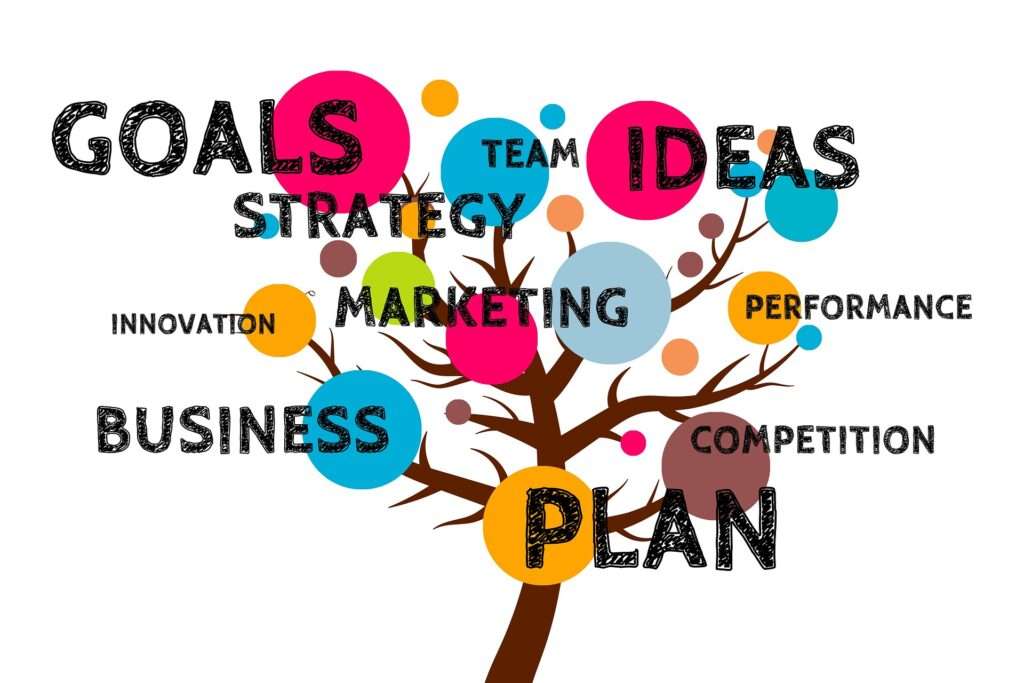I. Introduction to Internal Controls
Internal controls play a pivotal role in the success and stability of organizations. These procedures and protocols are designed to safeguard assets, prevent fraud, and ensure compliance with regulations. By instilling discipline and accountability, internal controls serve as a reliable framework for achieving operational efficiency and minimizing risks.
A. Understanding the Significance of Internal Controls
Internal controls provide a systematic approach to managing business operations. Their implementation allows organizations to mitigate the likelihood of errors, fraud, and misconduct. Furthermore, they instill confidence in stakeholders, such as investors, creditors, and regulatory bodies, as they indicate transparent and reliable financial reporting.
B. Key Objectives of Implementing Internal Controls
- Safeguarding Assets: Internal controls protect a company’s assets from theft, misuse, or unauthorized access. By establishing checks and balances, organizations can ensure the proper custody and utilization of valuable resources.
- Ensuring Accuracy and Reliability: Internal controls promote the integrity and accuracy of financial reporting by minimizing errors and irregularities. Reliable financial statements foster trust among shareholders, lenders, and other stakeholders.
- Compliance with Regulations: Internal controls assist organizations in adhering to legal and regulatory requirements. By implementing robust controls, organizations can mitigate the risks associated with non-compliance and potential penalties.
- Efficient Operations: Internal controls optimize operational efficiency by streamlining processes, reducing redundancies, and enhancing overall productivity. This leads to cost savings and a competitive advantage in the marketplace.
II. The Basics of Internal Controls
Before diving into the intricacies of internal controls, it’s crucial to grasp its foundational elements.
A. Definition and Conceptual Framework of Internal Controls
Internal controls encompass the policies, procedures, and methodologies implemented by an organization to ensure the effectiveness and efficiency of operations, reliability of financial reporting, and compliance with laws and regulations. They provide a structured and systematic approach to risk management and governance.
B. Components and Key Elements of Internal Controls
To further understand internal controls, it’s essential to explore its fundamental components.
1. Control Environment
The control environment represents the attitudes, values, and ethical standards set by management. It serves as the foundation for all other components of internal controls. A strong control environment fosters a culture of compliance and ethical behavior throughout the organization.
2. Risk Assessment
Risk assessment involves the identification and evaluation of potential risks that could impact the achievement of organizational objectives. By conducting a comprehensive analysis, organizations can prioritize risks and allocate resources appropriately.
3. Control Activities
Control activities are the actual policies and procedures implemented to address identified risks. These activities include authorizations and approvals, segregation of duties, reconciliation and review processes, and physical and logical access controls.
4. Information and Communication
Effective communication is crucial for internal controls to function optimally. Organizations need reliable and timely information to make informed decisions and ensure that necessary communication channels exist at all levels of the organization.
5. Monitoring
Continuous monitoring ensures that internal controls are effective and functioning as intended. Regular assessments and audits help identify weaknesses and provide opportunities for improvement.
III. Identifying Risks and Establishing Control Objectives
To implement robust internal controls, organizations must conduct comprehensive risk assessments and establish control objectives and strategies.
A. Conducting Effective Risk Assessments
Efficient risk assessments involve identifying potential risks, analyzing their impact and likelihood, and prioritizing them based on their significance. By understanding these risks, organizations can design appropriate control measures.
B. Determining Control Objectives and Strategies
Control objectives articulate the intended outcomes of implementing internal controls. They should align with the organization’s overall goals and risk tolerance. Organizations must identify control strategies that effectively address the identified risks and support the achievement of these control objectives.
IV. Designing and Implementing Internal Control Systems
Designing and implementing internal control systems require careful consideration and planning. This involves multiple steps and considerations.
A. Developing Policies and Procedures
Policies and procedures act as the backbone of internal control systems. They outline the specific activities and protocols to be followed in various operational areas. Clear and well-documented policies and procedures ensure consistency and accountability across the organization.
B. Segregation of Duties: Maximizing Efficiency and Minimizing Fraud
Segregation of duties involves assigning different responsibilities to multiple individuals to reduce the risk of fraud and errors. This ensures that no single individual has complete control over a transaction from initiation to completion, minimizing the potential for financial mismanagement.
C. Implementing Preventive and Detective Controls
Preventive controls are designed to proactively stop errors and irregularities from occurring, while detective controls are meant to identify and correct them after they have taken place. A robust combination of preventive and detective controls provides multiple layers of protection and improves the overall effectiveness of internal controls.
D. Understanding the Role of Technology in Internal Controls
In today’s digital age, technology plays a vital role in enhancing internal controls. Robust information systems and software can automate control activities, provide real-time monitoring, and generate accurate and reliable financial data.
V. Control Activities: Effective Techniques and Best Practices
Control activities are the actionable steps taken to mitigate risks and achieve control objectives. Let’s explore some effective techniques and best practices associated with various control activities.
A. Authorization and Approval Controls
Authorization and approval controls ensure that all transactions and activities are properly authorized. This includes formal processes for approving financial transactions, employee leave, and access to sensitive information.
B. Physical and Logical Access Controls
Physical and logical access controls restrict entry to physical premises, computer systems, and sensitive data. This involves implementing security measures such as identification badges, biometric authentication, password protection, and encryption.
C. Reconciliation and Review Controls
Reconciliation and review controls involve comparing financial records and transactions to detect any discrepancies or irregularities. This includes periodic bank reconciliations, inventory audits, and review of financial statements by independent parties.
D. Performance and Documentation Controls
Performance and documentation controls ensure that activities are performed in accordance with established policies and procedures. Regular performance evaluations, documented evidence of completion, and operational metrics are key components of these controls.
VI. The Role of Internal Controls in Financial Reporting
Internal controls are critical for maintaining accurate financial reporting and ensuring compliance with legal and regulatory requirements.
A. Maintaining Accurate and Timely Financial Statements
Internal controls provide the framework necessary to produce accurate and reliable financial statements. By implementing appropriate control activities, organizations can ensure the integrity and completeness of financial data.
B. Ensuring Compliance with Legal and Regulatory Requirements
Internal controls assist organizations in adhering to legal and regulatory requirements. By establishing robust control activities, organizations can minimize the risk of non-compliance, such as inaccurate financial reporting or violations of privacy regulations.
C. Evaluating and Enhancing Internal Audit Functions
Internal controls support the internal audit function by providing a basis for assessing the effectiveness and efficiency of internal controls. Through regular audits, organizations can identify areas for improvement and enhance the overall control environment.
VII. The Human Factor: People and Internal Controls
While internal controls involve policies and procedures, the human factor plays a crucial role in their effectiveness.
A. Creating a Culture of Compliance and Ethical Behavior
A culture of compliance and ethical behavior is vital for internal controls to function effectively. This involves fostering a sense of responsibility, integrity, and accountability among employees at all levels. Organizations should promote training programs, codes of conduct, and whistleblower mechanisms to encourage ethical behavior.
B. Training and Awareness Programs for Employees
Comprehensive training and awareness programs help employees understand the importance of internal controls and their individual responsibilities. By providing continuous education, organizations ensure that employees are equipped with the necessary knowledge to execute control activities efficiently.
C. Evaluating the Effectiveness of Internal Controls
Periodic evaluations are crucial to measure the effectiveness of internal controls. Assessments can be conducted through internal audits, self-assessment questionnaires, or third-party reviews. The results of these evaluations help identify gaps in control activities and guide improvements.
VIII. Internal Controls in IT Systems and Data Security
In today’s technology-driven world, internal controls must address the unique challenges posed by IT systems and data security.
A. Protecting Sensitive Information and Preventing Cyber Threats
Internal controls should include robust measures to protect sensitive information from unauthorized access, data breaches, and cyber threats. This involves implementing data encryption, firewalls, regular penetration testing, and security awareness training.
B. Segregation of IT Duties and Access Controls
Similar to segregation of duties in traditional business functions, segregation of IT duties is crucial to prevent fraud and ensure data integrity. This includes separating responsibilities related to system administration, programming, and security to minimize the risk of unauthorized access and manipulation.
C. Regular IT Systems Auditing and Compliance Monitoring
Regular IT systems audits and compliance monitoring are essential to identify vulnerabilities and ensure adherence to security policies and regulations. These audits involve reviewing system configurations, security logs, and conducting vulnerability assessments.

IX. Monitoring and Maintaining Internal Controls
Monitoring and maintaining internal controls is an ongoing process that ensures the effectiveness and continued improvement of control activities.
A. Conducting Internal Control Evaluations
Internal control evaluations involve periodic assessments of control activities to determine their effectiveness and identify areas of improvement. These evaluations can be conducted through internal audits, self-assessment questionnaires, or by engaging external consultants.
B. Implementing Control Self-Assessment Procedures
Control self-assessment procedures empower employees at all levels to actively participate in evaluating the effectiveness of internal controls. This involves self-assessment questionnaires, checklists, and open communication channels to gather feedback and insights.
C. Continuous Monitoring and Auditing Techniques
Continuous monitoring and auditing techniques, such as data analytics and real-time reporting, enable organizations to identify control weaknesses promptly and take corrective action. This proactive approach enhances the overall effectiveness and efficiency of internal controls.
X. External Audit and Assessing Internal Controls
Collaboration with external auditors is crucial to assess the effectiveness and scope of internal controls.
A. Collaborating with External Auditors
External auditors provide an independent assessment of an organization’s internal controls. Collaborating with them ensures the identification of control gaps, adherence to regulatory requirements, and validation of financial statements.
B. Evaluating the Effectiveness and Scope of Internal Controls
External auditors evaluate the effectiveness and scope of internal controls by testing control activities, reviewing documentation, and assessing the control environment. Their findings help organizations enhance their internal control systems and ensure compliance with established standards and regulations.
XI. Continuous Improvement and Adaptation of Internal Controls
Internal controls must evolve and adapt to changing risks and business environments to remain effective and relevant.
A. Periodic Review and Modification of Internal Control Systems
Periodic reviews of internal control systems are essential to capture changing risks, technologies, and regulations. Organizations should continuously assess the effectiveness of control activities and modify them accordingly to address emerging challenges.
B. Incorporating Feedback and Corrective Actions
Feedback from employees, auditors, and other stakeholders should be actively sought and integrated into the internal control system’s improvement process. This feedback helps identify areas for enhancement and implement corrective actions.
C. Addressing Emerging Risks and Evolving Business Environment
As businesses evolve, new risks arise. Organizations should stay agile and proactive in identifying emerging risks and designing effective control measures. By addressing these risks head-on, organizations can maintain a competitive edge in an ever-changing business landscape.
XII. Summary: Building a Foundation for Organizational Success
Mastering internal controls is indispensable for sustaining organizational success. By adopting robust control activities and fostering a culture of compliance, organizations can achieve operational efficiency, safeguard assets, and gain stakeholders’ trust.
A. Key Takeaways from Unlocking the Secrets of Internal Controls
- Internal controls are a structured framework that ensures operational efficiency, reliable financial reporting, and compliance with regulations.
- The key objectives of implementing internal controls are safeguarding assets, ensuring accuracy and reliability, complying with legal and regulatory requirements, and optimizing operational efficiency.
- Internal controls consist of a control environment, risk assessment, control activities, information, and communication, and monitoring.
B. Embracing Internal Controls as a Catalyst for Growth and Stability
Organizations that embrace internal controls as an integral part of their operations create a foundation for sustainable growth and stability. By prioritizing control activities and consistently evaluating and enhancing internal controls, organizations can navigate risks, protect valuable resources, and foster a culture of accountability.
XIII. Frequently Asked Questions (FAQs) on Internal Controls
To provide further clarity, here are some frequently asked questions about internal controls:
A. What are the main benefits of implementing internal controls?
- Safeguarding assets from fraud and theft.
- Ensuring accurate and reliable financial reporting.
- Mitigating compliance risks and ensuring adherence to regulations.
- Optimizing operational efficiency and reducing errors.
- Fostering stakeholder confidence.
B. How can internal controls help prevent fraud and financial mismanagement?
Internal controls deter and detect fraud and financial mismanagement by implementing preventive and detective controls, enforcing segregation of duties, and conducting regular monitoring and auditing activities.
C. What are the common challenges in establishing effective internal controls?
Common challenges in establishing effective internal controls include resistance to change, lack of awareness and training, resource constraints, and maintaining a balance between control activities and operational efficiency.
D. How does technology contribute to enhancing internal controls?
Technology contributes to enhancing internal controls through automation, real-time monitoring, data analytics, and increased efficiency in control activities. It provides opportunities for timely risk identification, improved data security, and streamlined control processes.
E. What are the implications of inadequate internal controls on organizations?
Inadequate internal controls can lead to financial losses, fraud, non-compliance with regulations, damage to reputation, and mismanagement of resources. Organizations may face legal consequences, loss of stakeholder trust, and diminished operational efficiency.
F. How often should internal controls be reviewed and updated?
Internal controls should be reviewed periodically to assess their effectiveness. The frequency of reviews depends on factors such as industry regulations, organizational changes, emerging risks, and technology advancements. Proactive organizations often conduct reviews annually or when circumstances dictate the need for a reassessment.
G. How can organizations assess the effectiveness of their internal control systems?
Organizations can assess the effectiveness of their internal control systems through internal audits, external audits, self-assessment questionnaires, feedback from employees and stakeholders, and benchmarking against industry best practices.
H. What is the role of internal controls in ensuring data security and privacy?
Internal controls play a crucial role in ensuring data security and privacy by implementing access controls, encryption methods, regular monitoring, and auditing. These measures safeguard sensitive information from unauthorized access, breaches, and potential data leaks.
I. How can small and medium-sized enterprises (SMEs) implement internal controls effectively?
SMEs can implement internal controls effectively by establishing a strong control environment, conducting risk assessments, designing appropriate control activities, and leveraging technology for automation and monitoring. It’s essential to prioritize control activities based on the organization’s unique risks and available resources.
By mastering internal controls, organizations can establish a solid foundation for success, ensure compliance, and mitigate risks. With careful planning, implementation, and continuous improvement, internal controls become a catalyst for growth, stability, and longevity, fostering trust among stakeholders in an ever-evolving business landscape.




